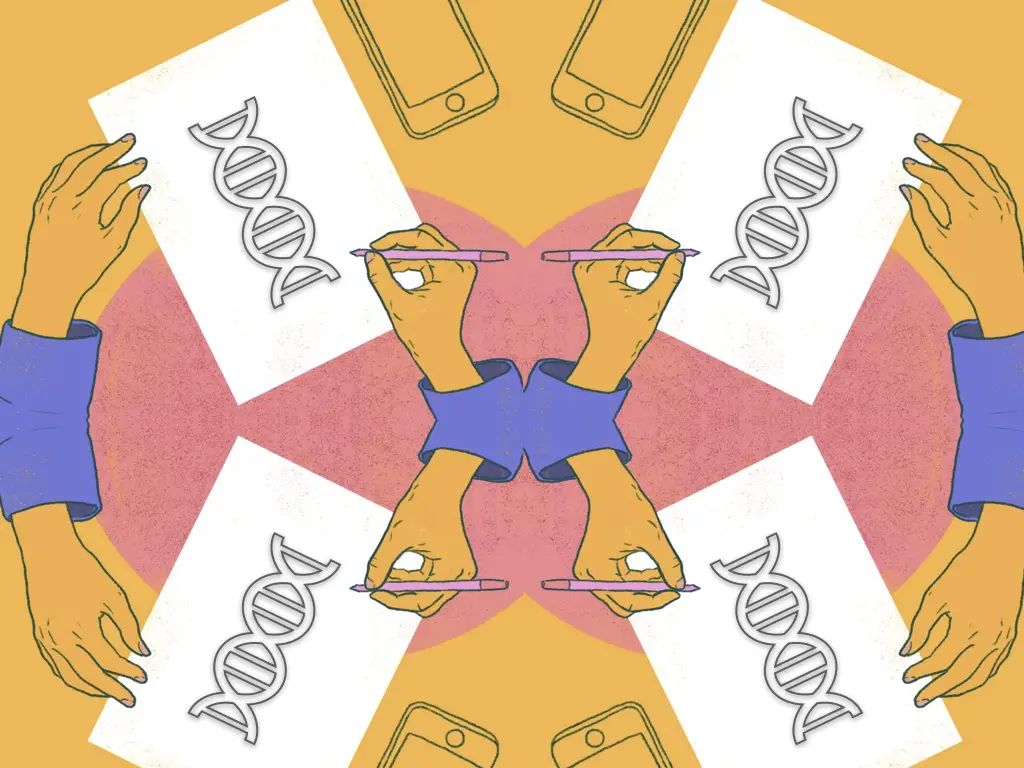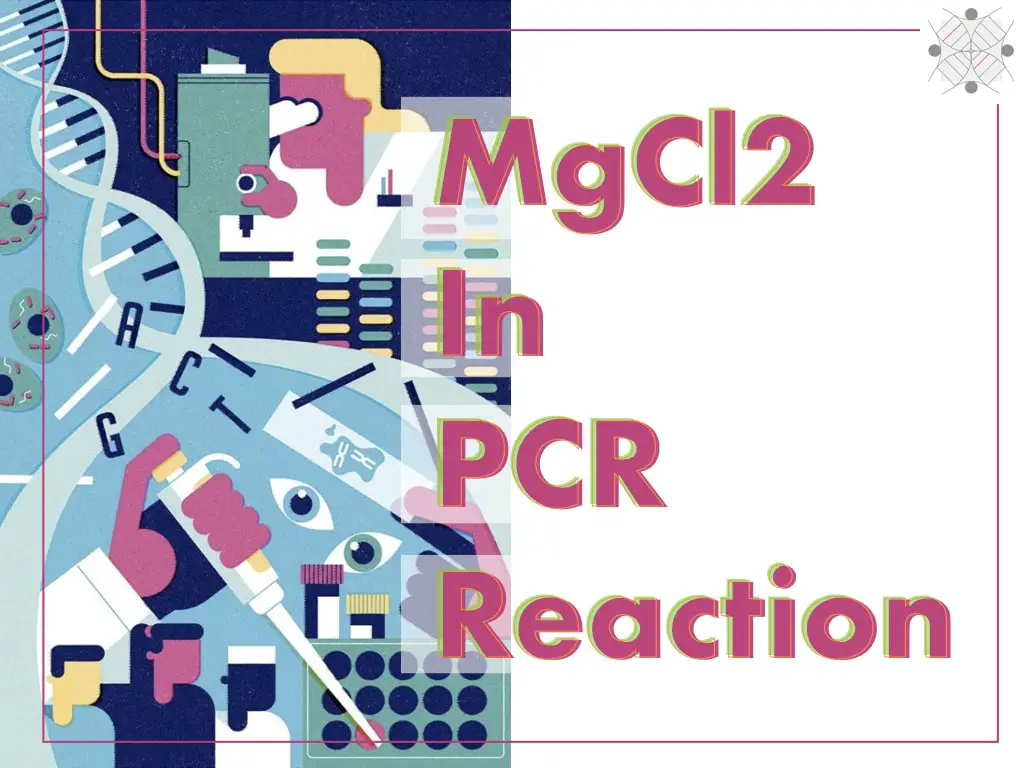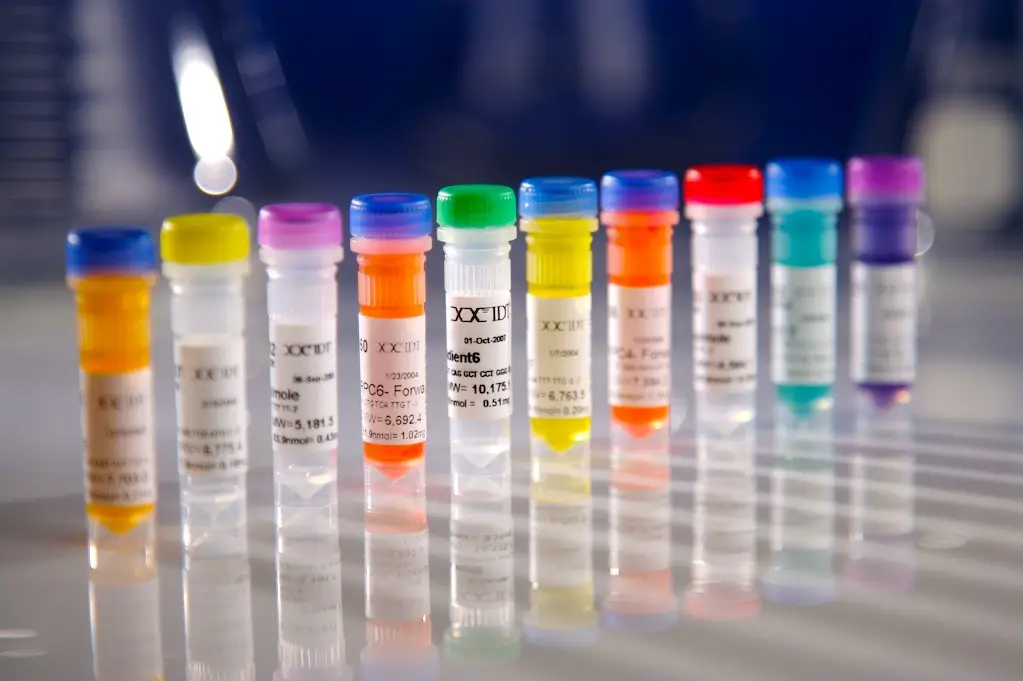Usually, 25 to 35 cycles a typical PCR reaction needs to get a good amount of amplification, containing denaturation, annealing and extension simultaneously at 95ºC, 50 to 68ºC and 72ºC.
I love PCR the most, the reason is, it’s a simple technique yet has applications in research as well as in diagnostics. The RT-PCR has saved millions of lives during the COVID-19 pandemic.
Another thing that makes it more valuable is its ‘scopes’. The PCR isn’t only a technique, it’s a whole subject or field, and has huge scopes for optimizations.
There are infinite possibilities to optimize parameters such as annealing temperature, denaturation temperature, cycling conditions, reaction preparation strategies and so on.
Every time when we use it, it solves one problem at the same time it creates another, a new opportunity for optimization. And that makes it a powerful tool for many fields.
We can’t even imagine genetics without PCR! That’s impossible. It’s a simple thermocycler machine that only regulates temperature and gives millions of DNA copies.
PCR stands for Polymerase Chain Reaction, we all know that right! It has utility in biotechnology, microbiology, forensic science, ecology, environmental science, botany, zoology, medical science, archaeology and many more.
These two articles may help you to learn more:
As we talked, playing with PCR Cycling conditions also deviates results and sometimes gives meaningful outputs. In this article, I am gonna show you how you can use the ‘PCR cycling conditions’ to optimize your PCR results.
Note that I will try to explain the basics too, but majorly the article will remain in-depth and practical.
Stay tuned,
Key Topics:
Standard PCR cycles and cycling conditions:
I am assuming that you know the PCR technique very well, if not, read the article given above. Let’s start.
The PCR consists of 3 steps and 2 sub-steps; 3 steps of denaturation, annealing and extension and one initial denaturation step & final extension step.
Denaturation leads to converting dsDNA into two ssDNA at 94ºC, Annealing binds primers to the template at 55 to 65ºC and extension expands the DNA strand at 72ºC. Taq DNA polymerase helps to synthesize DNA during PCR.
Among all 5 steps, PCR cycling consists of only 3 steps of denaturation, annealing and extension, one after another up to 30 to 35 times, that’s what our PCR cycling concept is. See the image first,
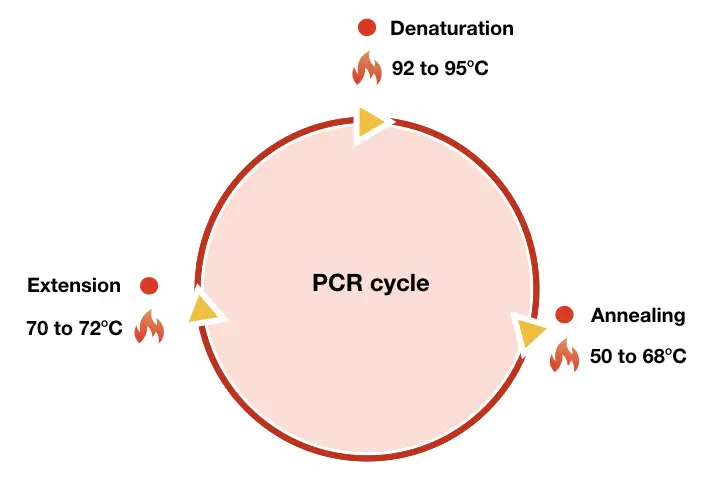
So practically, after each round of application, we will obtain doubled copies of DNA, meaning, 2 after the first round, 4 after the second, 8 after the third and so on. However, practically, things are different! I will tell you how.
Note it down, we will obtain our original sized fragment in the third cycle of PCR. Meaning, 2 copies of target amplicons will be obtained after the second round of the PCR cycle (in the third round)
6 amplicons obtained after the first and second rounds are intermediate products that aren’t our target DNA.
So somewhere in the middle of this DNA our amplification starts, the forward primer amplifies the right side and the reverse primer towards the left side. It amplifies the sequence until it reaches the end.
So if your target sequence is 400 bp after the first and second round we will get amplicons greater than that and are undesirable. The actual useful amplification starts in the third round in which among the 8 copies, 2 copies are the 400 bp sequence that we want.
So theoretically after the 3rd cycle, we will get 8 amplicons but practically we get only 2 useful target fragments. Now you may think about how many copies we will get after 10, 20 or 30 cycles?
How many copies of DNA are obtained after each round of amplification?
Theoretically, after each round of amplification PCR cycles generates 2n DNA copies. Here ‘n’ is the number of cycles.
PCR cycle calculator equation:
For single cycle 21 = 2
02 cycles 22= 4
10 cycles 210= 1,024
20 cycles 220 = 1, 048, 576.
However, note that among all copies 12 copies aren’t our target fragment, obtained during the 1st, 2nd and 3rd cycle.
Number of DNA obtained after each round of amplification:
| Cycles | Total copies obtained | Total target copies obtained |
| 1 | 2 | 0 |
| 2 | 4 | 0 |
| 3 | 8 | 2 |
| 4 | 16 | 8 |
| 5 | 32 | 22 |
| 6 | 64 | 52 |
| 7 | 128 | 114 |
| 8 | 256 | 240 |
| 9 | 512 | 494 |
| 10 | 1,024 | 1,004 |
| 15 | 32,768 | 32,738 |
| 20 | 1,048,576 | 1,048,536 |
| 25 | 33,554,432 | 33,554,382 |
These are several technical points, easy to understand and obviously quite known to all. In the upcoming section, our major focus will be on optimization.
Ideal PCR cycling conditions for various PCR:
Here I am enlisting the ideal temperature cycling conditions for various PCR types:
| PCR types | Cyclic conditions |
| Conventional and gradient PCR | 30 to 35 |
| ARMS PCR | 22 to 28 |
| Multiplex PCR | 28 to 35 |
| Long-Rang PCR | 30 to 40 |
| qPCR or RT PCR | 38 to 45 |
| Fast PCR | 18 to 22 |
Key consideration and PCR cycle Optimization:
Our goal to optimize PCR is to get successful and good amplification products. Here are my key considerations to achieve amplification by optimizing the PCR cycling conditions.
Use the initial denaturation step between 92 to 98ºC. Initial denaturation helps to denature the template completely. Keep in mind that temperatures above 95ºC will degrade or deactivate Taq DNA polymerase.
Do accordingly, for example, if it is a genomic DNA, use around ~95ºC, plasmid DNA 90 to 92ºC or high GC content using up to 98ºC. Do it for 2 to 3 minutes.
Set annealing temperature according to primers. Use the melting temperature of the primers to decide the annealing temperature of primers. Usually, set an annealing temperature 5ºC less than melting temperature.
Improper annealing temperature causes non-specific binding or un-amplification.
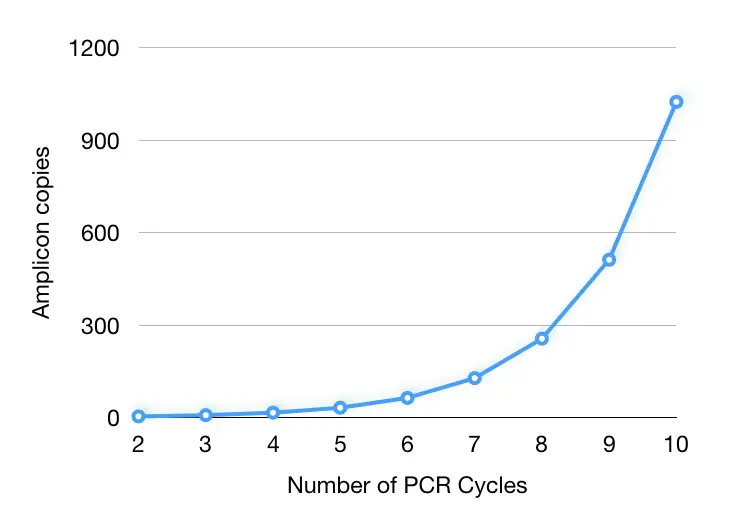
Too low PCR cycles:
Using fewer cycles also impacts the final results negatively. For let say we use 12 to 15 cycles, all the reactions that aren’t utilized remain unused. And therefore it aborts amplification prematurely.
We can’t get a sufficient amount of amplicons. The intensity of DNA bands seen under the gel is directly proportional to the number of amplicons generated during PCR cycles. Less amplification generates low-intensity DNA bands.
Too low PCR cycles produce truncated and fewer amplicons. Results aren’t conclusive.
Too many PCR cycles:
One should set PCR cycles as per the assay requirements or ideally between 25 to 35. If your assay is qualitative you can use fewer PCR cycles. It depends on how much amplification you want.
Ideally use ~30 cycles, which is quite impressive. But what if you use more PCR cycles? Like 40, 45 or 50? Can it be helpful or harmful?
Ideally, PCR takes 45 to 55 minutes to complete 30 PCR cycles, if we increase the number of cycles it obviously increases the run time unnecessarily. Therefore, it uses more resources and money too.
On behalf, it will give nothing! We have prepared a reaction that is sufficient for 30 to 32 cycles, afterward, the PCR runs empty, nothing is left there that amplifies the DNA and we even don’t need that much.
More cycles denature DNA unnecessarily and will increase the chances of non-specific bindings and unwanted amplifications, henceforth, not advisable.
Conclusion:
Polymerase Chain Reaction is a sensitive technique, minute points are taken into consideration while preparing the reaction, otherwise, it results in inappropriate results. The PCR cycling conditions are one among those parameters having a definite effect on the final product.
I hope this post may help you in your PCR learning and has added value. You can read related articles on our blog.
FAQs:
How many DNA copies do we get after the first round of amplification.
We will get 2 copies of amplicons after the first PCR cycle, however, our target amplicon will be obtained in the third cycle.
Why do we need 35 to 45 cycles in COVID-19 RT PCR assay?
To allow proper amplification, hybridization and quantification, we need 35 to 45 cycles in COVID-19 RT-PCR. The number of cycles decides the ct value of the reaction, which is our final result.
After which cycle we will get our target amplicon fragment?
After the second round of amplification and during the 3rd cycle we will get 2 target DNA amplicons out of 14.
What is the cycle threshold in PCR?
The cycle threshold in PCR abbreviated as Ct value is the number of cycles from where amplification begins during the qPCR or RT PCR reaction. Lower Ct value means more concentration of template while higher ct value means lower concentration of template.
This article may help you to understand more on present topics: Ct value of SARS-CoV-2 COVID-19 RT PCR.
What is the run time of PCR?
PCR takes 45 to 55 minutes to complete 30 cycles.
